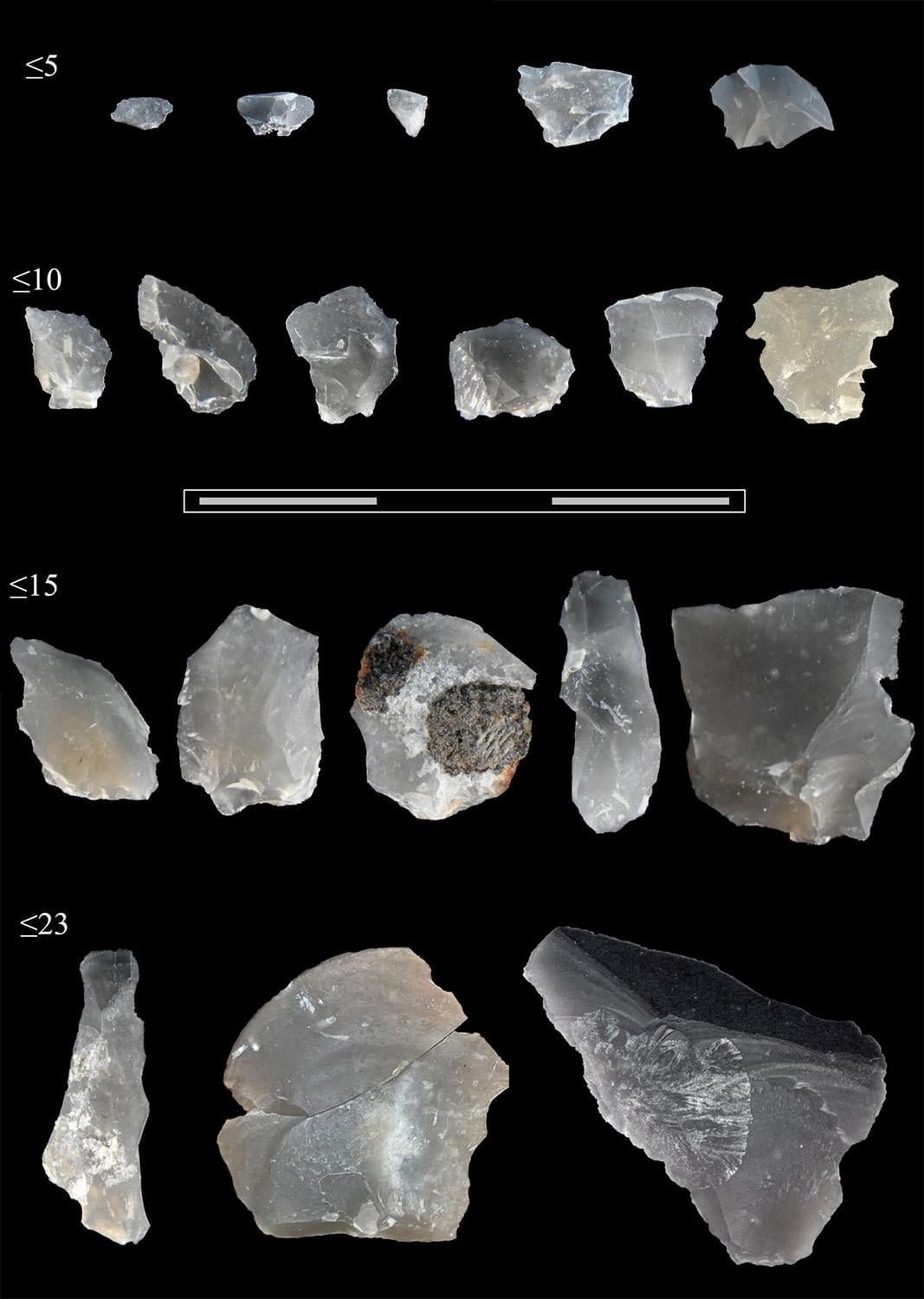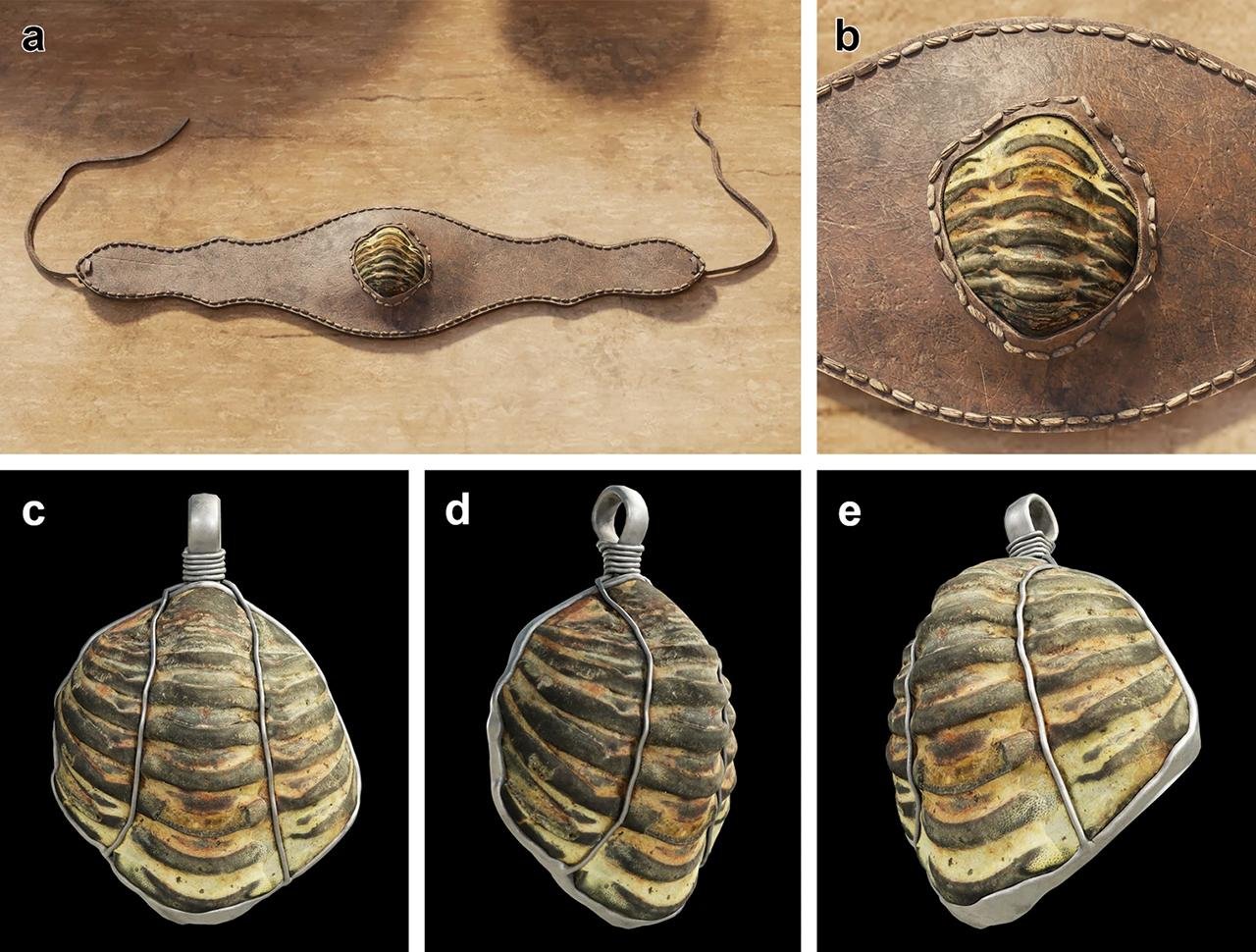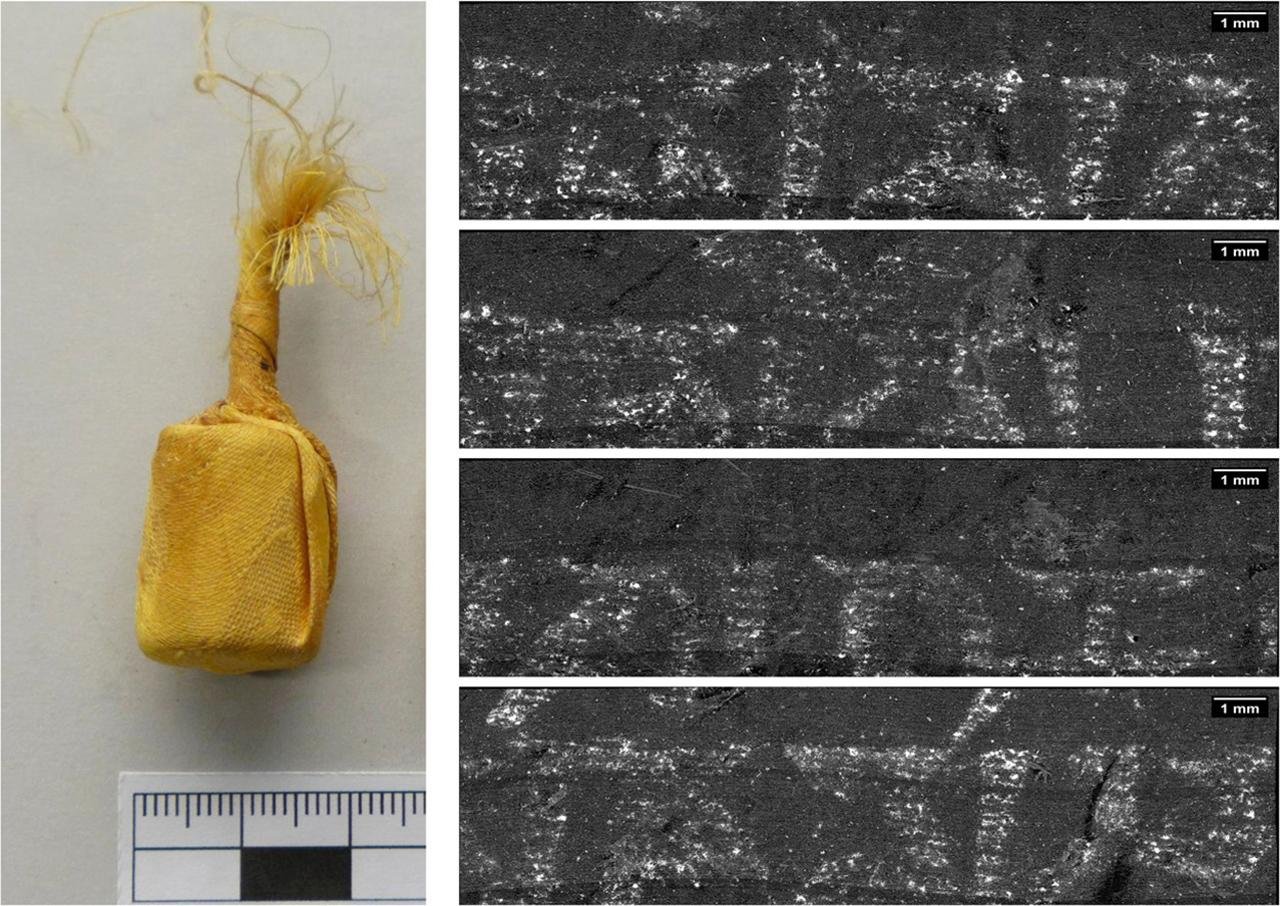A team led by the University of Tübingen and the Senckenberg Centre for Human Evolution and Palaeoenvironment (SHEP) analyzed tiny resharpening flakes from the well-known Middle Pleistocene site of Schöningen in Lower Saxony, Germany.
The team analyzed 57 flakes and three bone implements unearthed with the bones of a 300,000-year-old Eurasian straight-tusked elephant that died on the shore of a lake.
The results give researchers new insights into how early people processed wood.
Tübingen researcher Flavia Venditti, the study’s lead author, said: “Through a multidisciplinary approach that included technological and spatial analysis, the study of residues and signs of use, and methods of experimental archaeology, we were able to obtain more of the Stone Age story from these stone chips. The small flakes come from knife-like tools, they were knocked off during re-sharpening.”
 The flint chips from Schöningen, Germany. Credit: Flavia Venditti.
The flint chips from Schöningen, Germany. Credit: Flavia Venditti.
15 flakes show evidence of woodworking – “Microscopic wood residues remained attached to what had been the tool edges,” Venditti said.
In addition, micro use-wear on a sharp-edged natural flint piece showed that it was used to cut fresh animal tissue. “Probably this flint was used in the butchering of the elephant”. “These results are further evidence of the combined use of stone, bone, and plant technologies 300,000 years ago, as has been documented several times in Schöningen,” she added.
“We can prove, among other things, from the new finds that people — probably Homo heidelbergensis or early Neanderthals — were in the vicinity of the elephant carcᴀss,” said Dr. Jordi Serangeli, a researcher in the Senckenberg Centre for Human Evolution and Palaeoenvironment at the University of Tübingen, and director of the archaeological excavations in Schöningen.
“This study shows how detailed analyses of traces of use and micro-residues can provide information from small artifacts that are often ignored. This is the first study to produce such comprehensive results from 300.000 years old re-sharpening flakes. The prerequisite for this kind of research is that the artifacts are handled with extreme care from excavation throughout the analyses,” Professor Nicholas Conard from Tübingen and head of the Schöningen research project explained.
The study was published in the journal Scientific Reports.
More information: Flavia Venditti et al. (2022). Using microartifacts to infer Middle Pleistocene lifeways at Schöningen, Germany, Scientific Reports. DOI: 10.1038/s41598-022-24769-3





